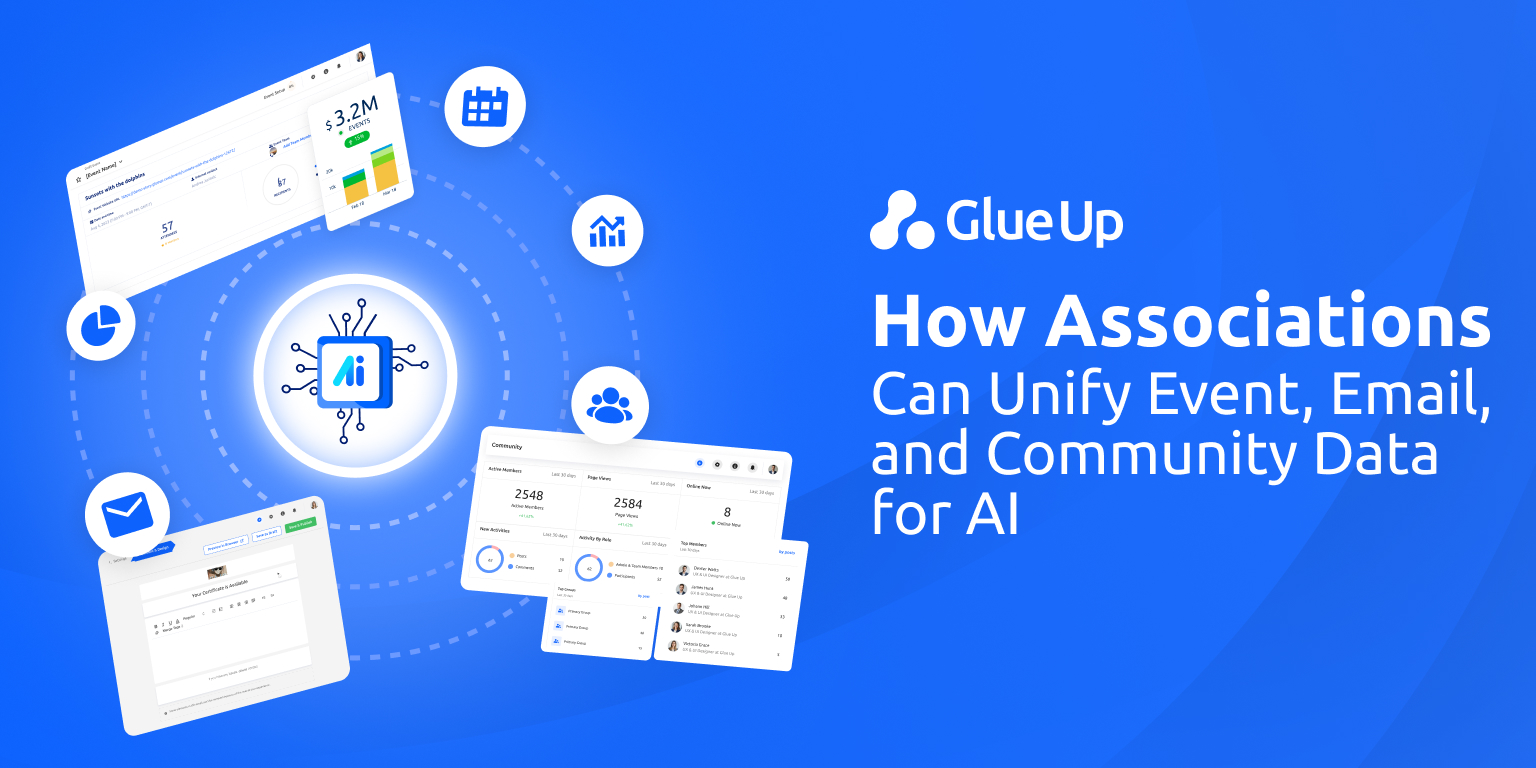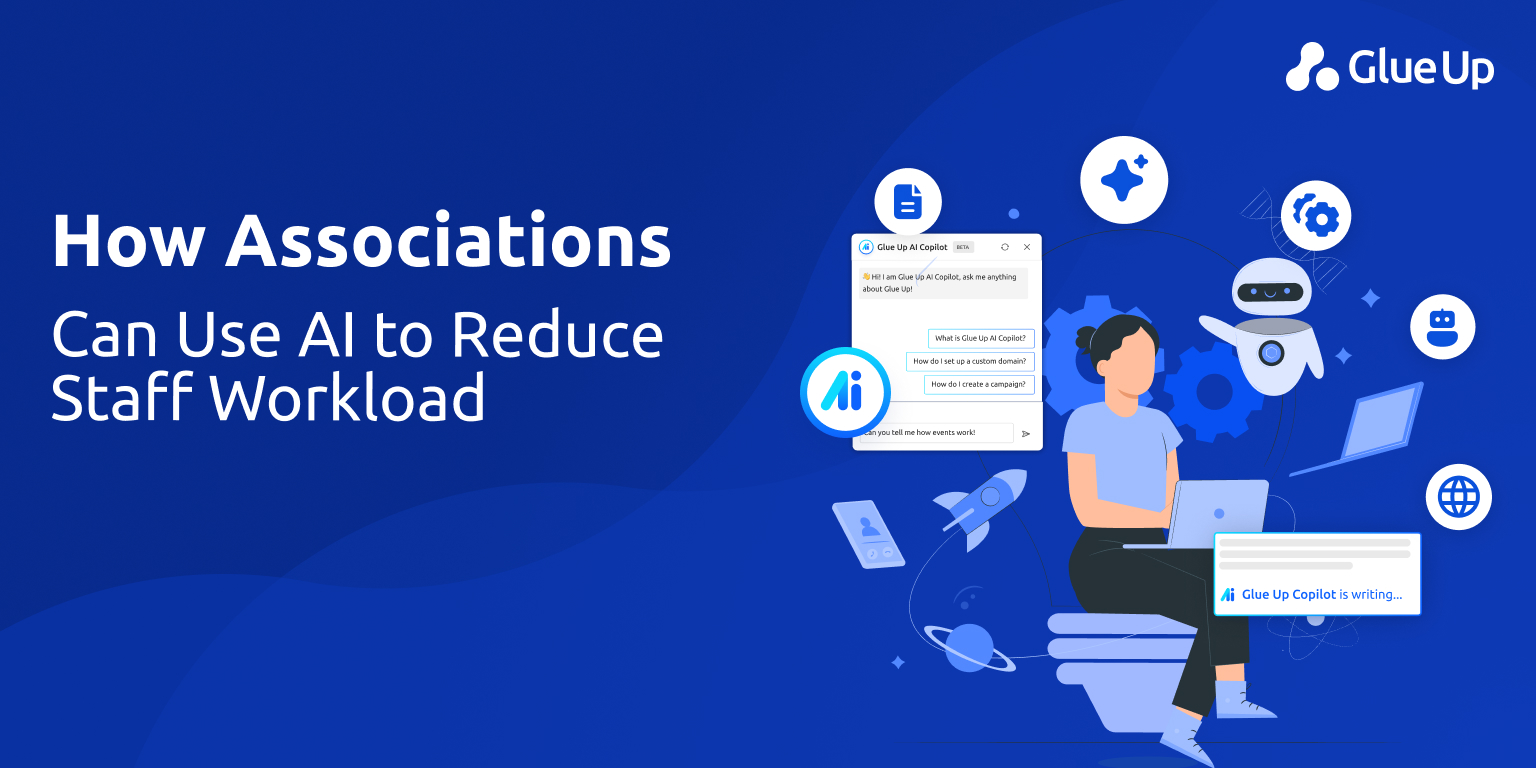
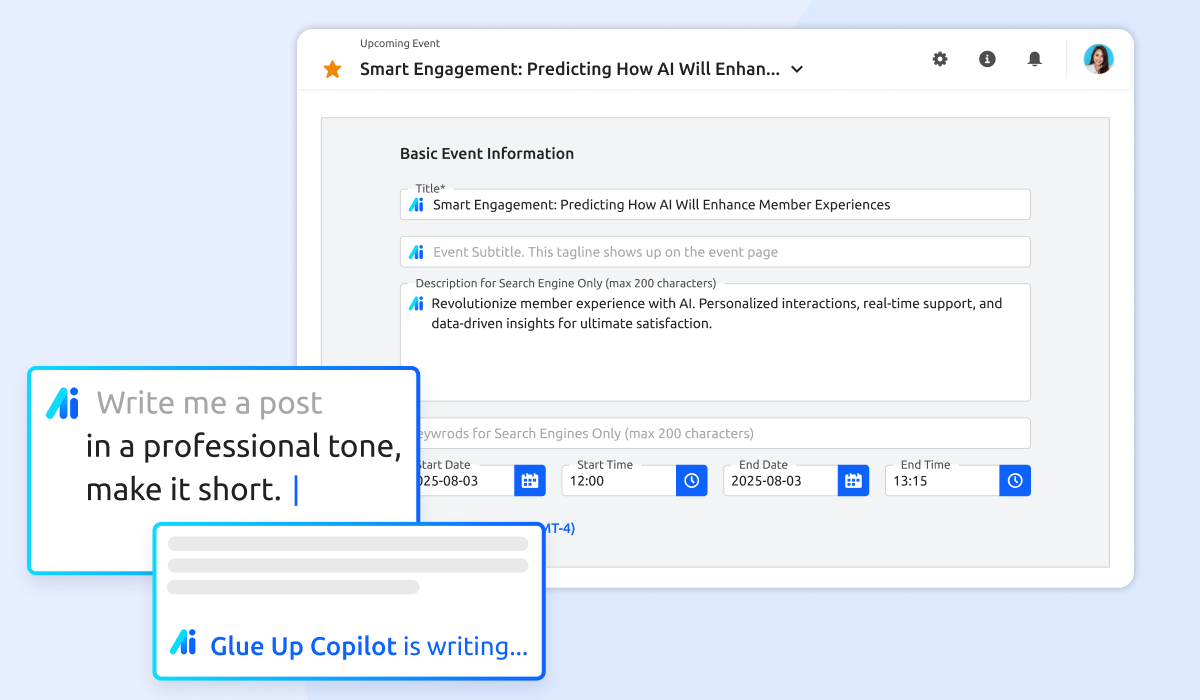
We’ve all heard the pitch: AI messaging will make your communication feel personal again. But for most organizations, it still looks like “Hi {FirstName}” followed by a message that could’ve been written by a toaster. It’s not that AI messaging is broken; it’s that the tools most people use don’t actually understand your members, your programs, or your voice.
If you’re leading a chamber, association, or member-based organization, you already know this. You’ve invested in automation, cleaned up your data, done the operational heavy lifting; and somehow, your messages still fall off. Flat. Cold. Generic.
AI messaging can’t sound human until it understands the humans behind the message.
The Automation Trap: When AI Messaging Becomes Noise
It usually starts with good intentions.
Someone on your team sets up a workflow. Maybe it’s an event reminder. A renewal notice. A policy change. It’s powered by “smart” tools that promise efficiency and engagement. But when it goes out, your inbox fills with the same replies:
“I didn’t understand this.”
“Is this even for me?”
“This feels like spam.”
The thing is, AI messaging systems aren’t broken, they’re just misapplied. They know how to schedule and send. They don’t know how to sound like you. They can’t feel the difference between a warm nudge and a formal update. And that’s where the disconnect begins.
What most platforms forget is that associations aren’t transactional. They're contextual. And most AI wasn’t built to handle context.
AI Messaging Doesn’t Fix Bad Writing. It Magnifies It.
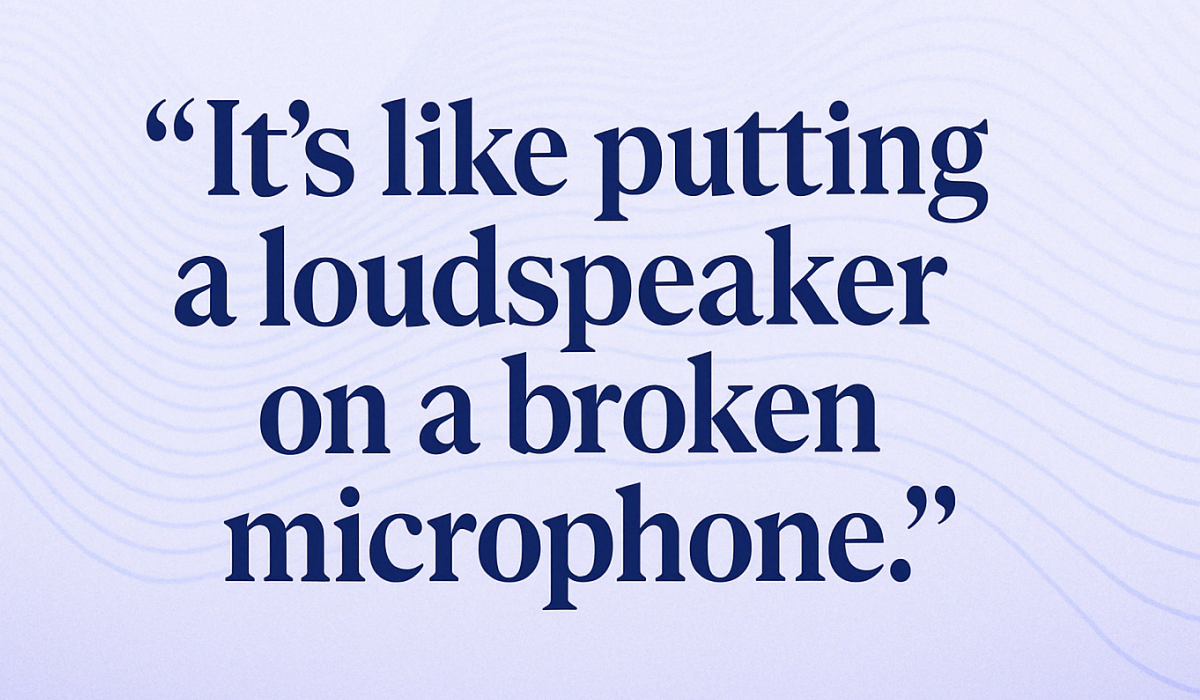
We’ve reached the point where AI can write for us, but that doesn’t mean it writes well.
In many organizations, especially in the nonprofit and association space, what passes for AI messaging is just templated language passed through a recommendation engine. But if you’re starting with generic content, even the smartest automation will only push out more of the same.
It’s like putting a loudspeaker on a broken microphone.
What gets lost is nuance—tone, timing, and trust. A dues reminder sent in the wrong tone can feel accusatory. A community announcement written too formally can sound like it’s coming from legal, not leadership. And once members start ignoring messages, the credibility of the entire organization suffers.
This is where real AI messaging support should step in. Not by automating tone-deaf emails, but by helping the actual humans behind them write better, faster, and more confidently.
Glue Up’s AI Copilot: Made for People Who Still Write
Somewhere along the way, we forgot who communication was for.
In the rush to automate everything, the member experience became a checkbox. Email campaigns were templated. Event invites were churned out. Updates were drafted, scheduled, and fired off; sometimes without a second look. And yet, something got lost, voice. Relevance. Humanity.
That’s the gap Glue Up set out to close; not with another platform promising “effortless automation,” but with a tool that supports what your team already does best: thinking, writing, and communicating with purpose.
Glue Up’s AI Copilot wasn’t built to replace your communications team. It was built for the people who still write.
And that’s an important distinction.
Because in associations, chambers, and professional member organizations, communication is a delivery system and a relationship. A renewal notice is a transaction and a moment to remind a member why they joined in the first place. A policy update is logistics and a reflection of your values. And an event follow-up? It’s your one shot to turn attendance into long-term engagement.
That kind of nuance can’t be faked. And it shouldn’t be outsourced to bots.
What Makes Copilot Different? It’s Here to Help You Own Writing.
As the first global AI-powered Association Management Cloud, Glue Up knows that relevance is survival. That’s why Copilot isn’t a black-box engine buried deep in a dashboard. It’s a chat-based assistant that works right where your staff already lives inside your event summaries, your onboarding flows, your membership updates.
It’s not about adding more AI. It’s about adding more you.
You can ask Copilot to rewrite an announcement in a friendlier tone. Or summarize a 1,000-word policy email into three bullet points that won’t get ignored. Or help a junior staff member craft a message with the same voice your board expects from leadership. It’s not push-button automation. It’s a support system for when your team’s plate is full and the calendar is on fire.
This isn’t some “set-it-and-forget-it” copy machine. It’s an always-there thought partner—ready to co-write, clarify, tighten, or rethink your message, in your voice, on your terms.
Real Tools for Real People, Because Engagement Isn’t Robotic
The Copilot was designed with a simple premise: the best messaging still starts with people. And when people are supported, when they don’t have to start from scratch or second-guess their tone, they communicate better. Faster. Smarter. More clearly.
Glue Up’s AI Copilot does exactly that. It doesn’t strip away your team’s voice; it sharpens it. It doesn’t tell you what to say; it helps you say it better.
And that’s what associations really need right now. Not a shortcut. Not a gimmick. A system that understands the structure of member communication; why tone matters, why trust is everything, and why even the smallest update can shape how your members feel about your entire organization.
So no, you’re not handing off your communications to AI.
You’re giving your people the tools to write like the best version of themselves, even when they’re short on time, sleep, or bandwidth.
And that’s a kind of intelligence no automation can replace.
What Smarter AI Messaging Looks Like
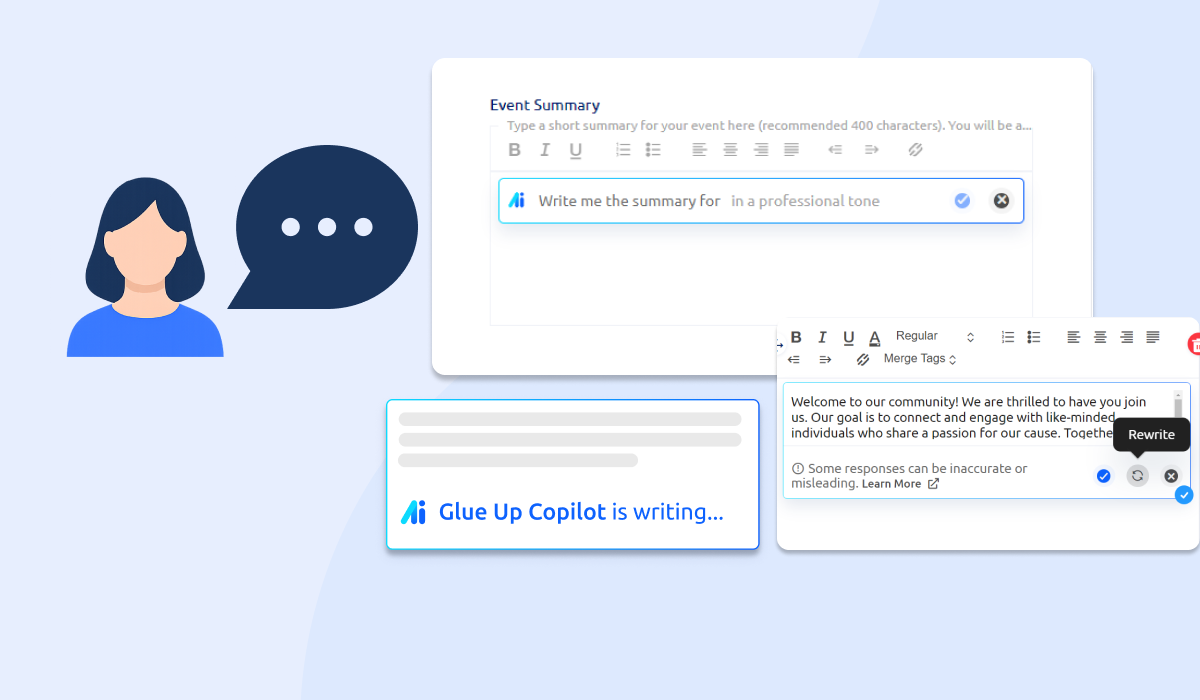
Let’s leave the buzzwords behind and talk about what this looks like in real life.
Because of all the hype around AI messaging, its value isn’t found in abstract dashboards or flashy demos. It’s found in the quiet moments; when a membership director has 18 tabs open and a deadline in two hours. When a communications lead needs to explain something sensitive without sounding cold. When a new hire has to write in a voice they’re still learning to understand.
These are the real scenarios where Copilot earns its keep.
The Membership Director
You’ve got a renewal campaign going out next week. You’ve drafted the email, but something about it feels... off. The benefits section reads like a pricing table. The tone feels more transactional than personal. And you’re stuck in that space between “informative” and “pushy.”
Copilot steps in, to reshape it. It rewrites the blurb on tiered benefits, so it sounds like a direct value reminder. More one-on-one. Less mass broadcast. Suddenly, the message reads like it was written by someone who knows the member on the other end.
The Communications Lead
A new policy is going into effect next month, and you’re tasked with writing the announcement. You know this will be scrutinized; by members, by staff, by the board. You’re trying to strike a tone that’s clear but not cold, firm but not defensive.
So, you pull Copilot into the conversation.
It offers three tone variations based on your original draft: one formal and precise, one friendly and conversational, and one that lands somewhere in between. You pick your favorite, tweak a few lines, and hit send with confidence; knowing you’ve communicated the update in a way that respects both the message and the audience.
The New Team Member
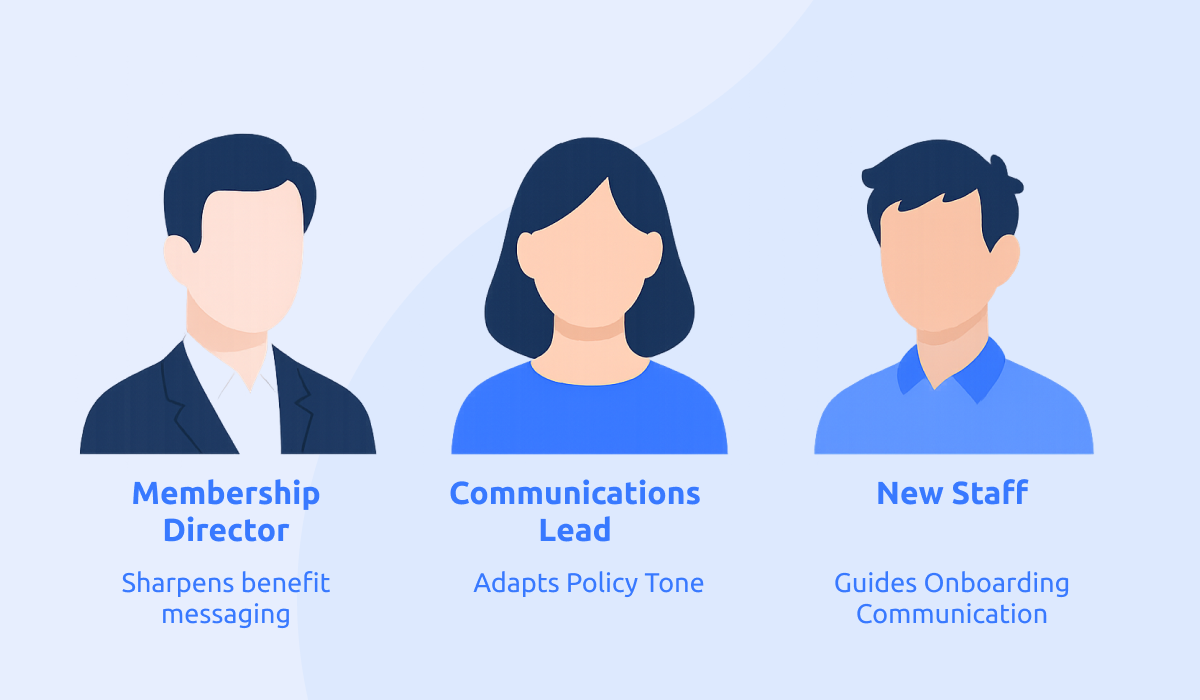
They’re sharp, eager, and three weeks into the job. They’ve been asked to draft a community announcement, and they’re not quite sure where to start. They know what they want to say; but they don’t know how to say it in the organization’s tone. They’re staring at a blinking cursor, wondering how to make it “sound right.”
Copilot becomes their writing coach.
It suggests a starting structure, helps rephrase clunky sentences, and even recommends alternative ways to frame the announcement. In a few minutes, they’ve got a message that sounded like it came from someone who’s been on the team for years.
These are real moments from real organizations. And they speak to a larger truth about AI messaging: it’s not about writing for you. It’s about writing with you.
Because when AI supports the humans doing the work, backing them up, that’s when messaging starts to feel human again.
And that’s when members start to listen.
This Is Tech and Trust.
When your message sounds robotic, people don’t just ignore it; they stop trusting you. And trust is your greatest asset.
Glue Up’s AI Copilot helps preserve that trust by letting your team speak like humans; even when they’re overworked, under-resourced, or writing in a rush. It doesn’t take shortcuts. It offers scaffolding.
And in an age where “AI messaging” has become a buzzword, that clarity matters more than ever.
Your Messaging Is Operational and Strategic.
Every message you send carries weight. It shapes how members perceive your value, your tone, and your competence. Yet most AI messaging tools flatten that nuance. They reduce communication to templates and timing; when what really matters is trust, relevance, and voice.
Glue Up’s AI Copilot wasn’t built to broadcast louder. It was built to help your team communicate smarter, with language that reflects who you are and what your members expect.
This reclaims clarity, scaling thoughtfulness, and putting better words into motion, without burning out your people in the process.
Because robotic updates don’t drive retention. Clarity does. Consistency does.
Communication that feels like it came from someone who understands what it means to lead a professional community, that’s what drives results.
So, if you’re done settling for “good enough,” if you’re ready to move beyond vague engagement metrics and back into real connection; start with a system that helps your team say what matters, in a way that lands.
Book a demo today. See how Glue Up’s AI Copilot makes every message work harder, and sound more like you.

